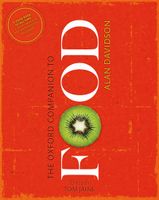Advertisement
Film and Food
Published 2014
It seems reasonable, with food so essential to the maintenance of human life, that film, itself a mirror—though occasionally distorted—of life, has not shirked from the inclusion of scenes of preparation, ingestion, accumulation, and sometimes destruction of food (see custard). As well as being a given of the day-to-day, the portrayal of meals, for example, can also be a useful device for advancing a plot, for gathering protagonists in a single place, for any amount of interaction and conversation. And foods can signify far more than their physical or accidental properties and be deployed as symbols freighted with cultural, sexual, or psychological meaning. An essay on the variety of food-related incidents in film would be long, but there are studies worth notice which explore many of these aspects (Poole, 1999; Bower, 2004). Directors may have always been alert to the possibilities of food, just as they have explored the many meanings and messages of housework, but it is only in the last decade or two that a new genre, that of food film, has developed. Which is to say that the film world has marched in step with the real world in accepting and exploring the significance of food and eating in the general order of things. What had been episodes—memorable scenes of meals as in


